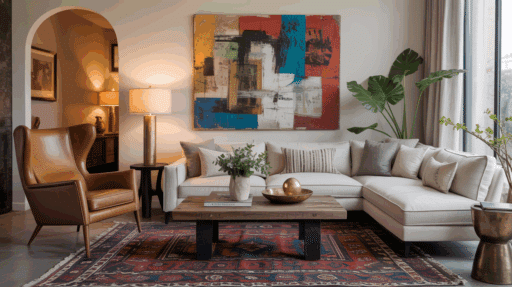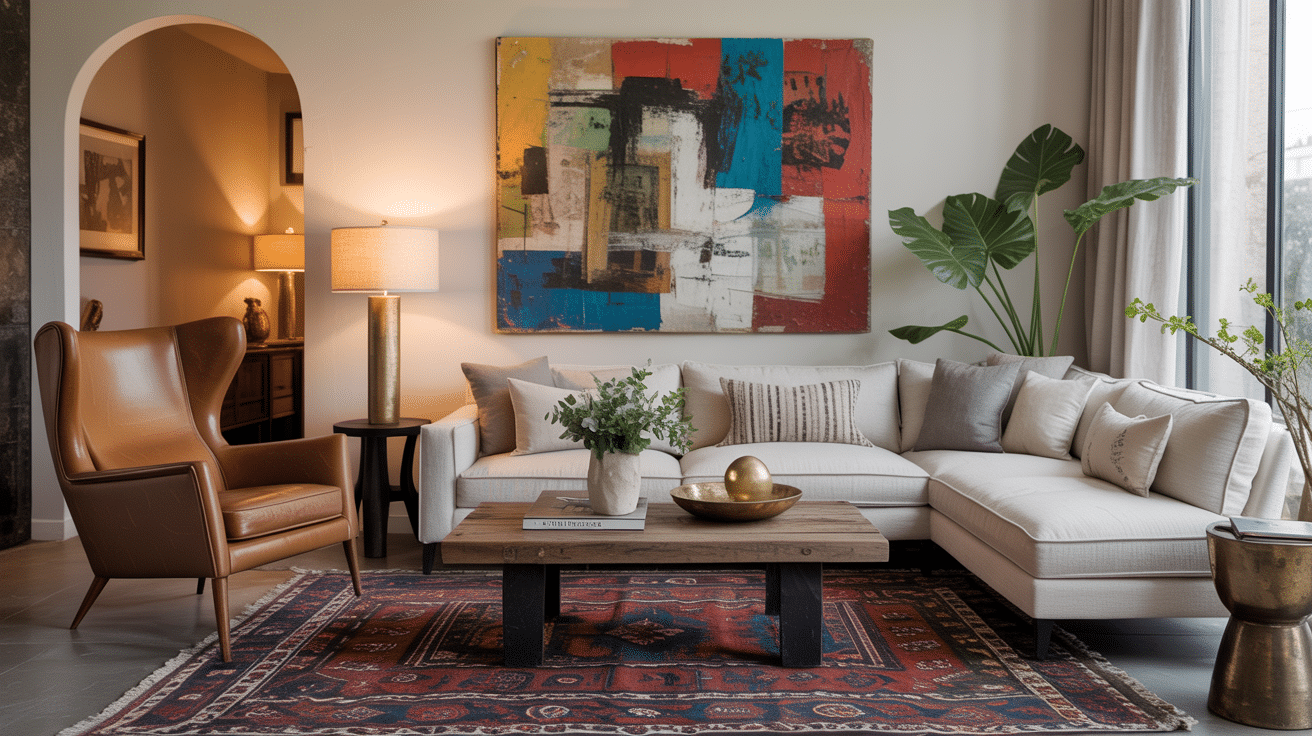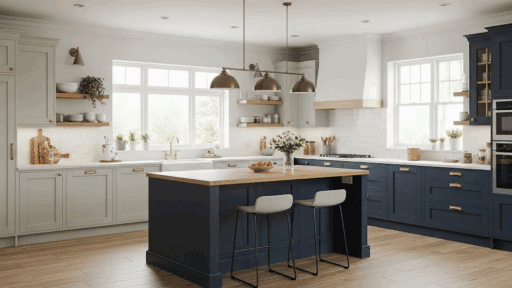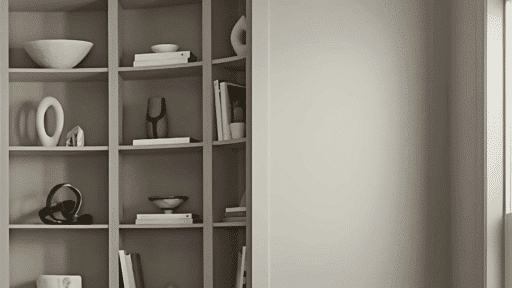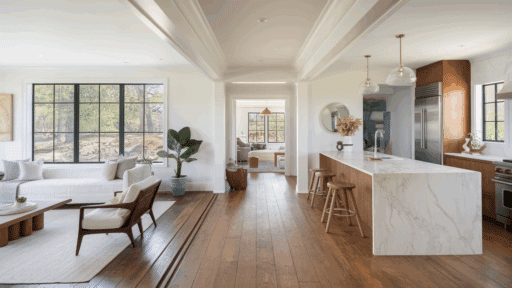Are you tired of cookie-cutter rooms that look like furniture showrooms? I get it. Modern homes often feel sterile when we adhere to a single design aesthetic.
You love that mid-century chair, but you’re also drawn to rustic farmhouse tables and sleek contemporary lighting. Mixing different furniture styles seems risky; what if it looks like a garage sale explosion?
The truth is, eclectic design isn’t about throwing random pieces together.
I’ll show you exactly how to blend various styles of furniture seamlessly, creating spaces that feel both curated and authentically you. Your home can tell your story through a thoughtful mix of styles.
The Evolution of Furniture Styles
I’ve always been fascinated by how furniture tells the story of our changing lives.
Traditional styles like Victorian and Colonial dominated for centuries, with their ornate details and heavy woods reflecting wealth and permanence. Then came the game-changers.
The modernist movement flipped everything upside down. Mid-century modern burst onto the scene with its iconic Eames chairs and sleek credenzas. Meanwhile, Scandinavian design whispered elegance through simplicity; think light woods and cozy minimalism.
Art Deco added glamour with its geometric patterns and luxurious materials. Each movement left its mark, creating a rich tapestry of different furniture styles that still influence us today.
The rigid rules began loosening as people realized their homes could reflect multiple influences. This shift toward mixing and matching paved the way for today’s eclectic approach, where a Danish teak sideboard can live happily next to a contemporary sectional and vintage Persian rug.
Core Categories for Styles of Furniture
I’ve found that most styles of furniture fall into a few key categories: traditional, modern, transitional, and specialty styles; each with distinct characteristics that influence how they work together.
Once you grasp these foundations, creating your own eclectic combinations becomes much more intuitive.
1. Traditional
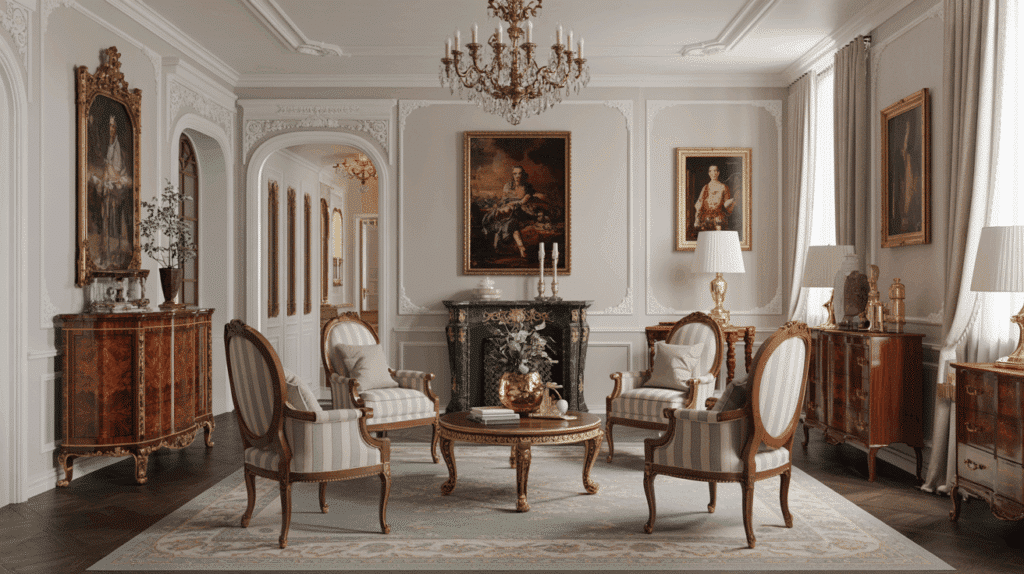
Elegant, timeless, and rooted in history. Traditional furniture draws inspiration from 18th and 19th-century European decor.
Key Features:
- Ornate details and carved woodwork
- Symmetrical layouts
- Rich fabrics (velvet, brocade) and dark wood finishes
Best For: Formal living rooms, dining spaces, or anyone who appreciates grandeur and classic charm.
2. Modern & Minimalist

Born from the mid-20th century and evolved for today’s sleek sensibilities, this style emphasizes simplicity, form, and function.
Key Features:
- Clean lines and geometric shapes
- Neutral or monochrome palettes
- Bare, clutter-free spaces with purpose-driven pieces
Best For: Urban apartments, modern condos, or anyone seeking calm and visual clarity.
3. Rustic & Industrial
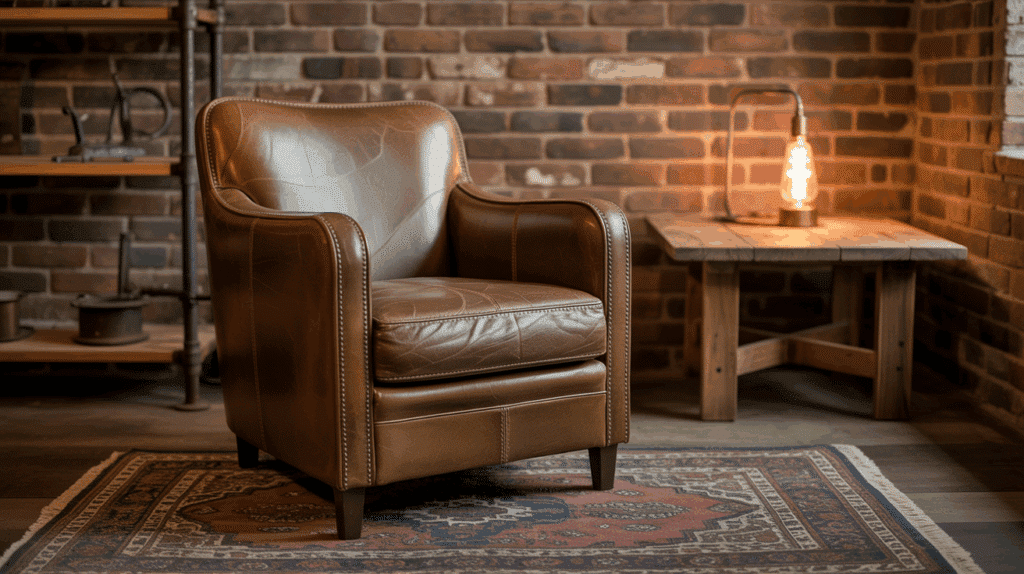
A raw, grounded aesthetic that celebrates unfinished textures and earthy tone; either rooted in countryside charm or urban warehouse vibes.
Key Features:
- Exposed wood beams, brick, and metal accents
- Reclaimed wood and distressed finishes
- Oversized furniture with sturdy frames
Best For: Converted lofts, mountain cabins, or farmhouse-style homes.
4. Bohemian & Vintage

Expressive, colorful, and free-spirited. Boho and vintage styles pull from decades past to create layered, whimsical interiors.
Key Features:
- Pattern mixing, global textiles, and eclectic accessories
- Vintage or thrifted furniture pieces
- A relaxed, lived-in look with personal touches
Best For: Creative spaces, artist studios, or homes filled with personal stories and collected items.
5. Transitional
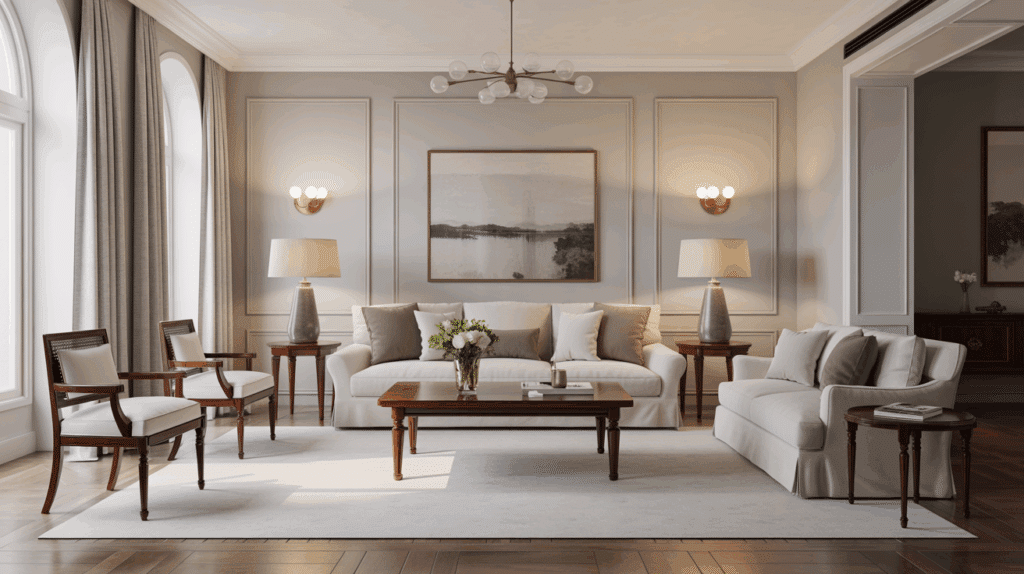
A beautiful blend of traditional elegance and modern minimalism. Transitional design bridges the gap for those who love both worlds.
Key Features:
- Neutral colors with textural contrast
- Balanced silhouettes (not too ornate, not too stark)
- Versatile pieces that feel timeless yet current
Best For: Family homes, contemporary professionals, or anyone who wants stylish harmony.
Blending Different Furniture Styles with Your Decor
Eclectic furniture style isn’t about randomly throwing together pieces you love; it’s strategic storytelling through design. I like to think of it as curated collecting, where each piece serves a purpose while contributing to a cohesive narrative.
When I blend Scandinavian and Boho styles, I might use the clean lines of Nordic furniture as my foundation, then layer in textured throw pillows and macramé wall hangings. The neutral palette keeps everything grounded while the textures add warmth and personality.
For a Modern + Rustic combo, I start with sleek contemporary seating, then introduce a reclaimed wood coffee table and vintage leather accents. The contrast works because both styles share an appreciation for quality materials and functional design.
I recently worked on a living room that perfectly demonstrates this intentional mixing: a mid-century walnut credenza anchored one wall, while a contemporary gray sectional faced a rustic live-edge coffee table. Brass accents throughout, from picture frames to lamp bases, created visual continuity.
The result? A space that felt both timeless and current, formal yet approachable.
Trending Furniture Styles Defining the Future of Interior Design
Today’s trending styles aren’t just about aesthetics; they’re responding to how we actually live, work, and connect in our homes.
From sustainable materials to multifunctional designs, these emerging furniture styles are reshaping what modern living looks like.
1. Japandi (Japanese + Scandinavian)

A harmonious fusion of Japanese minimalism and Scandinavian functionality, Japandi emphasizes natural materials, muted tones, and clean lines with a sense of serene order.
- Why It’s Trending: As people seek calm, clutter-free environments, Japandi’s balance between warmth and simplicity offers both elegance and tranquility, especially in stressful urban living.
- Where It Fits Best: Urban apartments, minimalist homes, wellness-focused spaces.
2. New Maximalism (Bold, Layered Spaces)

A vibrant, expressive style that celebrates personality through bold colors, diverse patterns, eclectic furniture, and layered textures.
- Why It’s Trending: In contrast to years of minimalism, homeowners are craving individuality, creativity, and vibrant storytelling in their spaces.
- Where It Fits Best: Artistic homes, bohemian studios, creative lofts, family homes with dynamic personalities.
3. Sustainable Chic (Eco-Conscious Design)
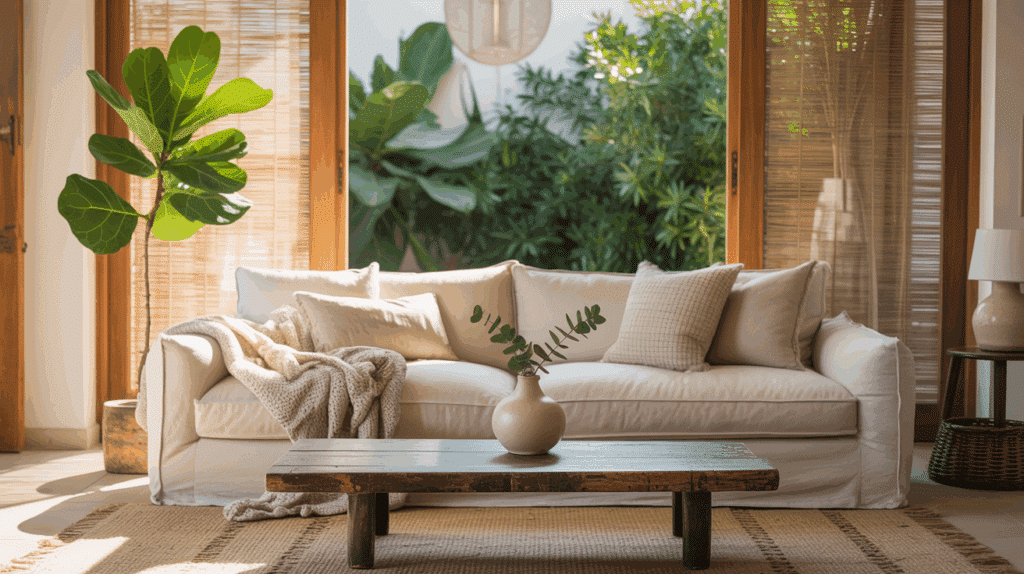
Prioritizes sustainable materials (reclaimed wood, bamboo, and recycled metals), upcycled furniture, and low-impact manufacturing processes, all with a stylish and modern aesthetic.
- Why It’s Trending: With growing environmental awareness, consumers want design that looks good and does good, without sacrificing luxury or beauty.
- Where It Fits Best: Eco-conscious homes, modern farmhouses, suburban renovations.
4. Modular Multifunctionalism
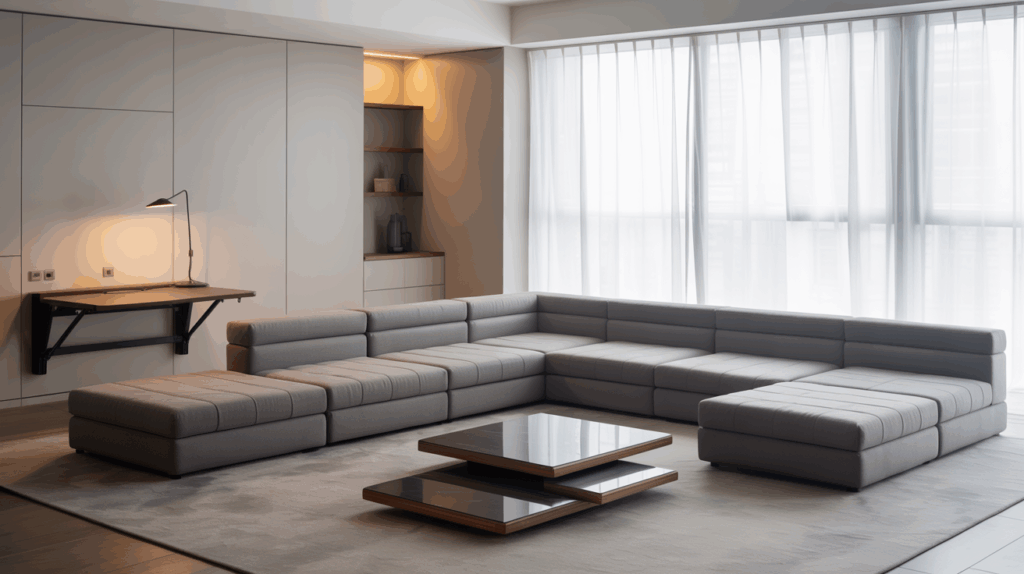
Flexible, customizable furniture that adapts to different needs, such as modular sofas, nesting tables, or storage-integrated seating.
- Why It’s Trending: The rise in urban density and remote lifestyles demands space-saving and agile solutions that optimize limited square footage.
- Where It Fits Best: Tiny homes, studio apartments, multifunctional living spaces.
5. Neo-Traditional (Updated Vintage)
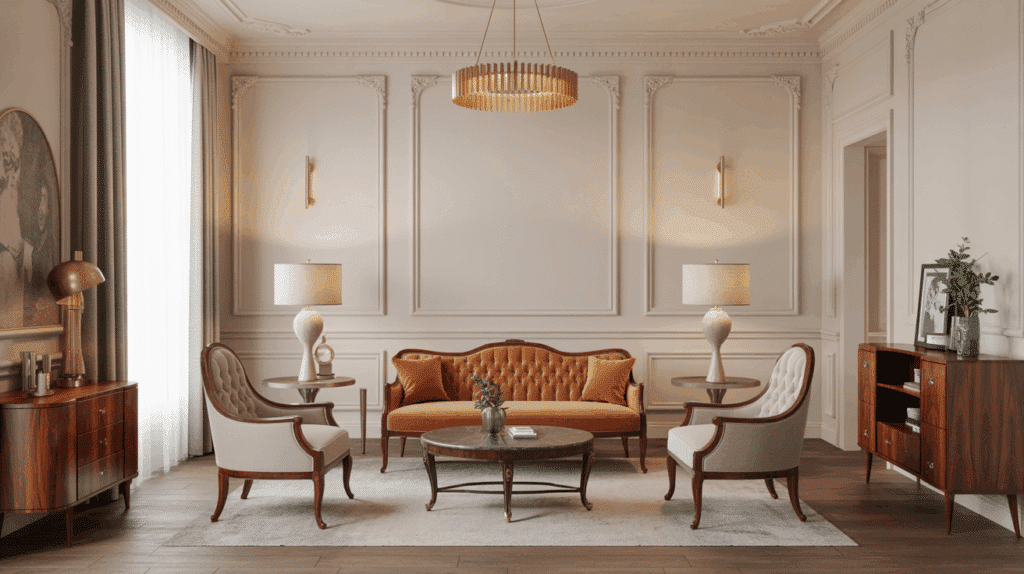
Reimagines classic designs with fresh colors, sleeker silhouettes, and modern material, blending old-world charm with new-world sophistication.
- Why It’s Trending: Nostalgia meets novelty; people want familiarity, but with a current twist that suits today’s aesthetic preferences.
- Where It Fits Best: Townhouses, heritage homes, elegant suburban interiors.
6. Art-Inspired Furniture
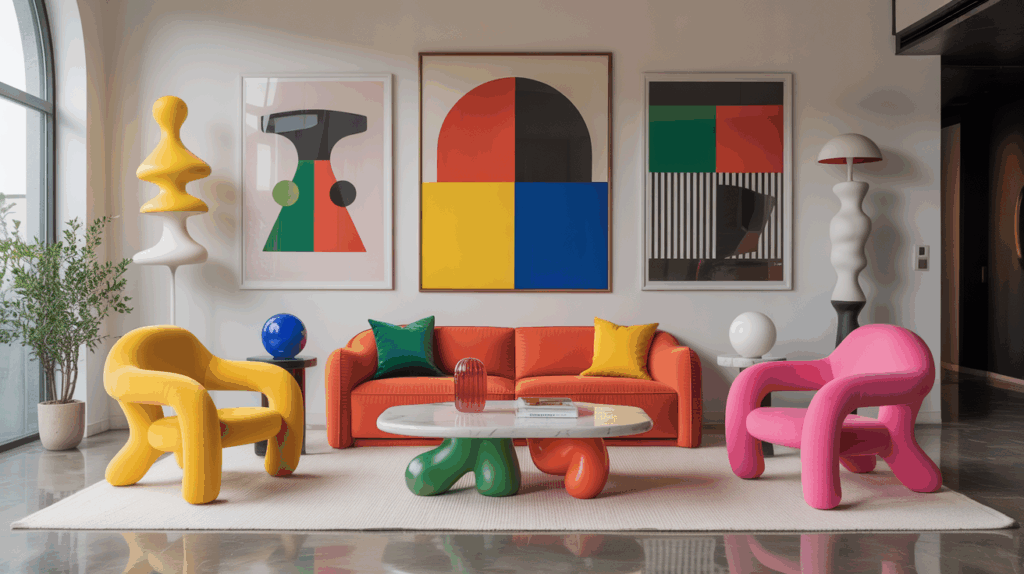
Statement pieces that double as art; think sculptural chairs, abstract coffee tables, or bold color-blocked sideboards.
- Why It’s Trending: As more people value self-expression in home design, functional art becomes a conversation-starter and a form of personal storytelling.
- Where It Fits Best: Contemporary homes, creative studios, modern art-inspired interiors.
7. Tech-Integrated Smart Furniture
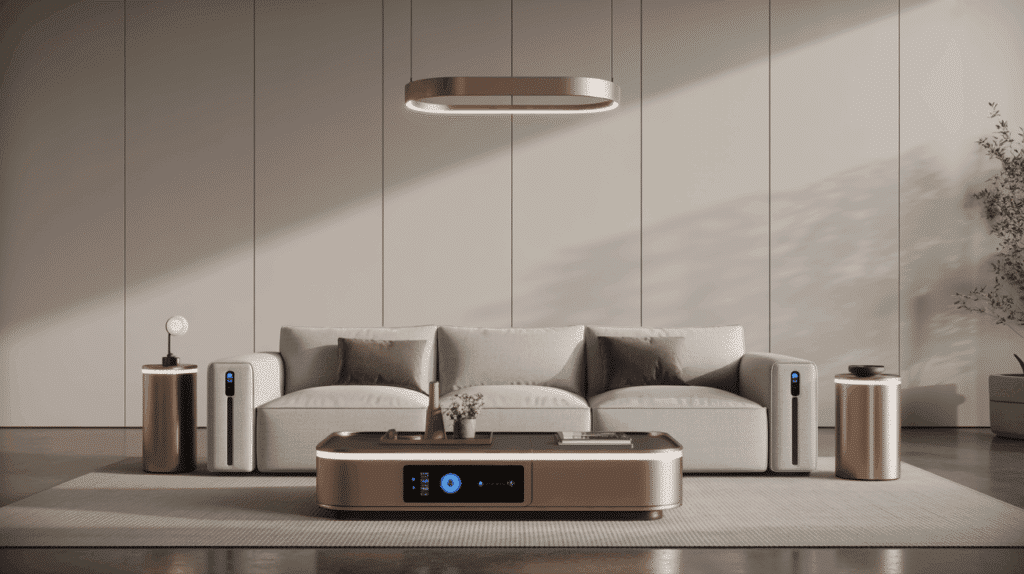
Furniture with built-in technology: wireless charging side tables, adjustable brilliant desks, beds with sleep tracking, and more.
- Why It’s Trending: As smart homes become mainstream, tech-enhanced furniture supports convenience, wellness, and futuristic living.
- Where It Fits Best: Tech-forward homes, urban condos, remote workspaces.
8. Wabi-Sabi Aesthetics

Accepts imperfection, natural materials, and organic shapes with an understated, lived-in charm rooted in Japanese philosophy.
- Why It’s Trending: People are seeking authenticity, mindfulness, and beauty in imperfection; a counter to glossy, over-styled trends.
- Where It Fits Best: Mindful living spaces, cozy reading nooks, artisanal homes.
9. Biophilic Comfort

Incorporates nature into interiors; with living walls, rattan furniture, curved wood, earthy palettes, and indoor plant integration.
- Why It’s Trending: Biophilic design supports wellness, reduces stress, and improves air quality; key desires in post-pandemic home life.
- Where It Fits Best: Nature-connected homes, garden rooms, wellness-inspired interiors.
10. Cultural Fusion Pieces

Celebrates global craftsmanship and diverse design heritage; Moroccan poufs with Scandi chairs, Indian inlays with Japandi lines.
- Why It’s Trending: Travel-inspired interiors are making a comeback, and homeowners are drawn to unique, story-rich, globally inspired pieces that reflect their worldview.
- Where It Fits Best: Eclectic homes, travel-inspired retreats, globally conscious interiors.
How to Incorporate Trending Styles in Your Home
Smart integration is about working with what you have while strategically adding pieces that shift your room’s entire mood.
- High-Low Mixing Strategy: Start with one investment piece; maybe a quality vintage dresser from an estate sale; then build around it with budget finds. Use expensive items as anchors and fill in with thrifted accessories that complement the style.
- Color Cohesion Method: Pick three colors max and repeat them throughout the room in different furniture styles. Use neutral bases (your existing large pieces) and add trending colors through smaller, easily swappable items.
- The Paint Unifier: Paint can transform mismatched furniture into a cohesive collection, I’ve seen random dining chairs become a stunning set with one unified color that bridges various styles of furniture.
- Statement Piece Rule: Choose one bold piece per room to prevent visual chaos. Let your statement piece be the room’s conversation starter, then keep everything else more subdued.
- Texture Over Style Competition: Mix textures rather than competing styles—a sleek metal table with a chunky knit throw creates interest without conflict between different furniture styles.
- Homeowner Power Moves: Paint walls to create cohesive backdrops for mixed styles, install built-ins that bridge old and new pieces, and consider permanent fixtures that complement your eclectic approach.
Conclusion
Creating an eclectic home isn’t about following rules; it’s about breaking them thoughtfully.
I’ve shown you how different furniture styles can coexist beautifully when you focus on intention over impulse.
If you’re mixing a vintage find with modern pieces or bridging rustic elements with contemporary design, remember that your space should evolve with you.
Start small. Pick one room and experiment with the strategies we’ve covered.
Trust your instincts, and don’t be afraid to move things around until they feel right. Your home is your canvas, and the best styles of furniture are the ones that make you smile every time you walk through the door.

